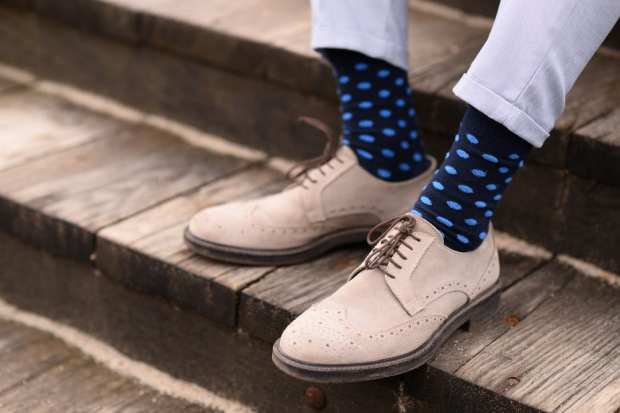Subscription Services That Connect Consumers With Socks For All Occasions

While studying at the University of California, San Diego, Daniel Farahdel studied abroad in Seoul, South Korea, and he noticed that socks were trending — and it seemed like everyone around him would show off their colorful socks. The experience inspired him to start THREADJAR Socks.
Today, the company sells a variety of socks through the subscription business model. Consumers can choose to purchase one, two or three pairs at a time and pay for their subscriptions every month, every three months or every year. His company is not alone — 65.4 percent of subscription providers offered plan options in the fourth quarter of 2018, according to the latest PYMNTS Subscription Commerce Conversion Index.
At the end of the THREADJAR checkout process, consumers can pay for their subscriptions by credit card, and they receive free shipping with their orders. (The company, however, also accepts PayPal, Amazon Pay and Google Pay for a la carte purchases of socks.) The company said all subscriptions include free shipping, no commitment as consumers can cancel at any time, and one size fits most (with men’s size 7 through 13).
Each of the subscription shipments is a bit of a surprise. The company chooses which pairs it sends out to customers in each delivery. When it comes to curating the socks for deliveries to his customers, Farahdel said he likes to make sure that each one includes a variety of socks. If a consumer places an order for, say, three socks, he might pick one pair with a polka dot pattern, another pair with a unique design, and another pair with a stripe. That way, he mixes it up for his customers and allows them to add a little variety to their sock drawers.
The Differentiators
Farahdel said he focuses on quality to differentiate his socks from others available in the marketplace and works “very, very closely” with his manufacturer, which sends him samples, and they go back and forth to ensure that every detail is perfect.
Farahdel, for instance, aims to make sure the sock isn’t too tight or too loose. The toe is hand-sewn, so there isn’t a knot at the toe area, which makes the socks comfortable around the toes. The socks also have heel-toe reinforcement.
Farahdel also noted he makes several designs, but not all of them make the cut. He might make a design, and the samples come back too loose or with too much threading or the color might go away after several washes. He also tries on the socks himself. His target market — originally when he started — was young professionals because “that’s the age I was at when I started,” he said. Today, it serves young professionals up to middle-age men — anyone who wants to wear them at the office or for day-to-day life.
The socks, he noted, are not too thin, but not as thick as casual athletic socks. For marketing, the company turns to Instagram, emails, Google, and Facebook, as well as word of mouth. The latter method has been particularly successful for the company, Farahdel noted, as consumers try his socks, love them, gift them, and then word of the company spreads. That’s the No. 1 “most effective” way of marketing, he said. The company also has nearly 40,000 Instagram followers.
For gifts, consumers can include a message with their orders. Shoppers can also purchase single socks from the company’s eCommerce store, with designs ranging from the Gone Fishn’ Dress Socks with a fish pattern, to the Influencer Dress Socks with a hashtag pattern. In the future, Farahdel said he wants to grow the company’s product selection. As of now, he only offers men’s socks. But he aims to focus on expanding to cover women’s, kids’ and toddlers’ socks as well.
Even so, he said he wants to grow his selection to include more varieties of men’s socks — more stock-keeping units (SKUs) — as he connects shoppers with a variety of socks through subscriptions.
